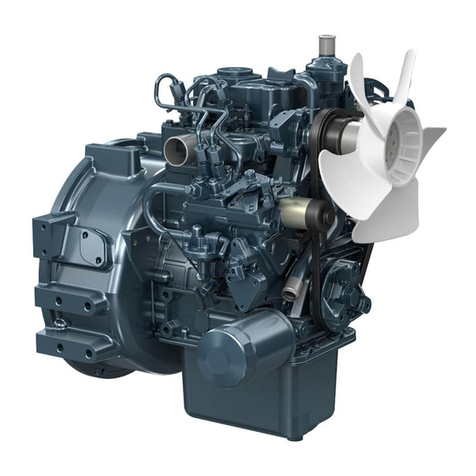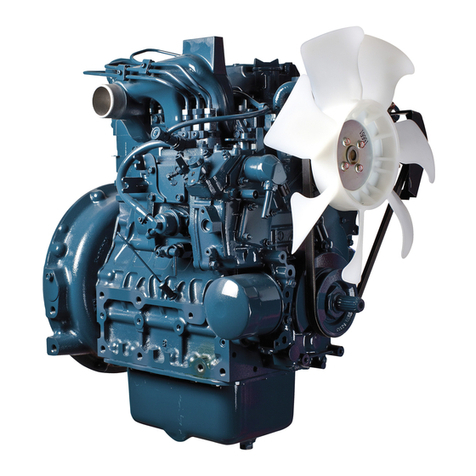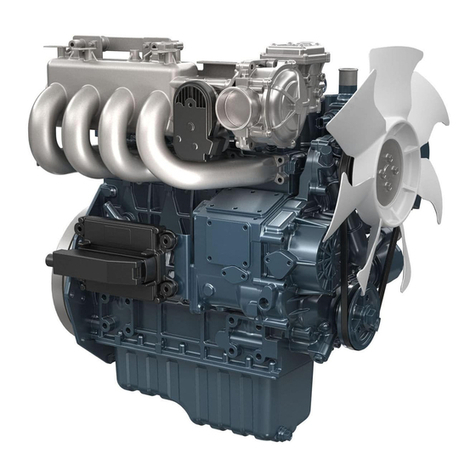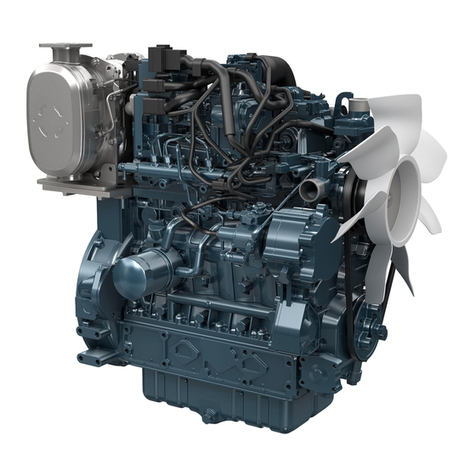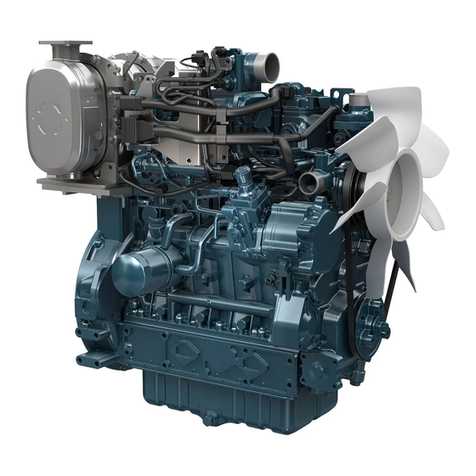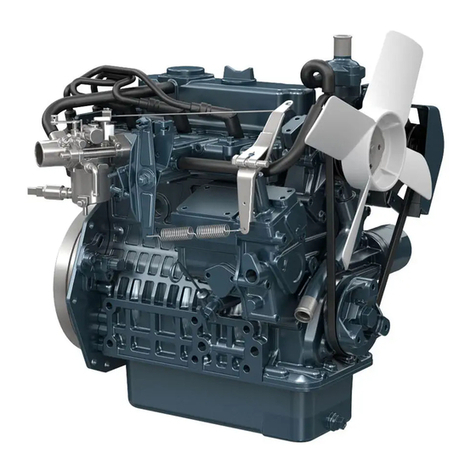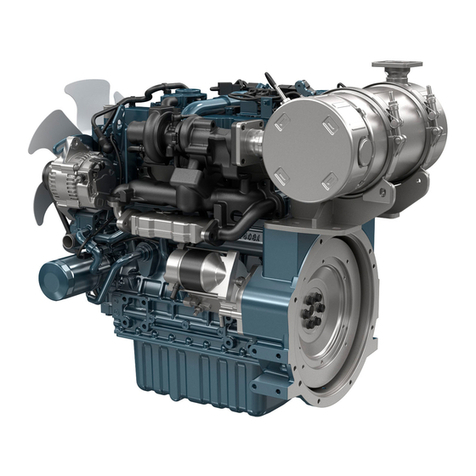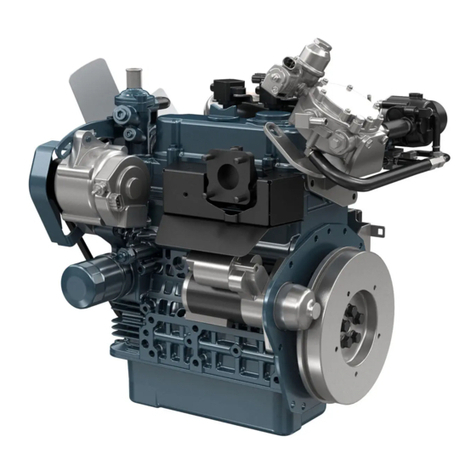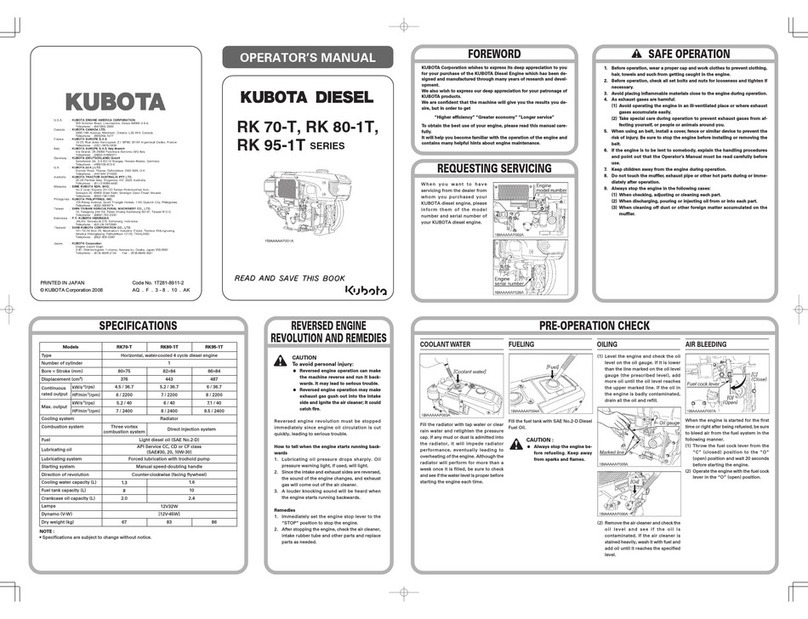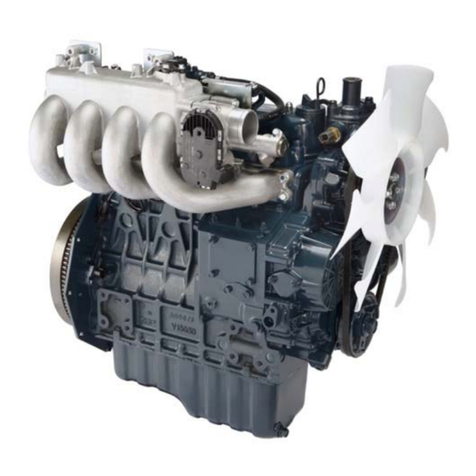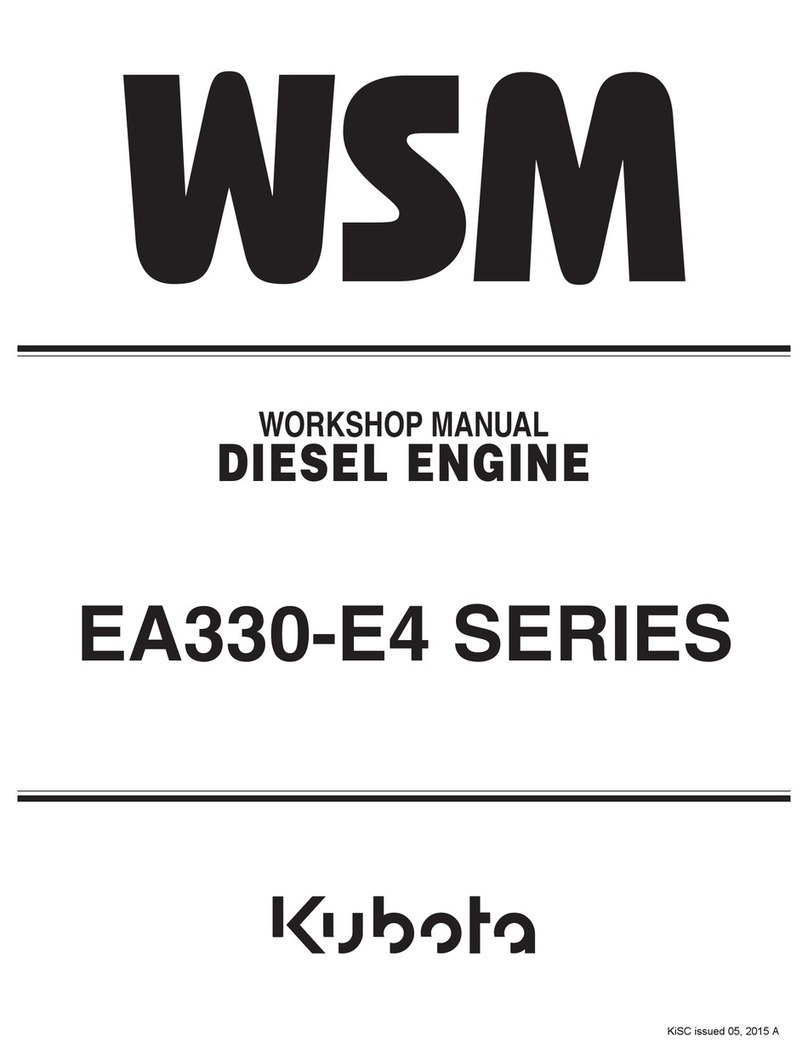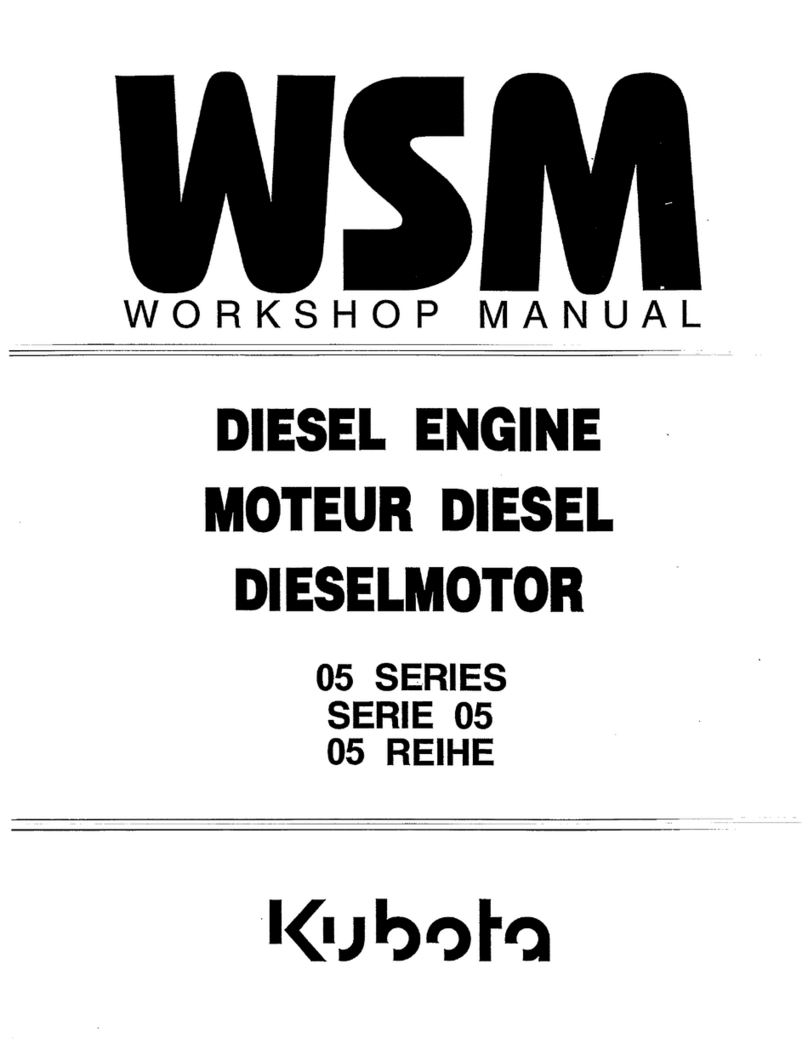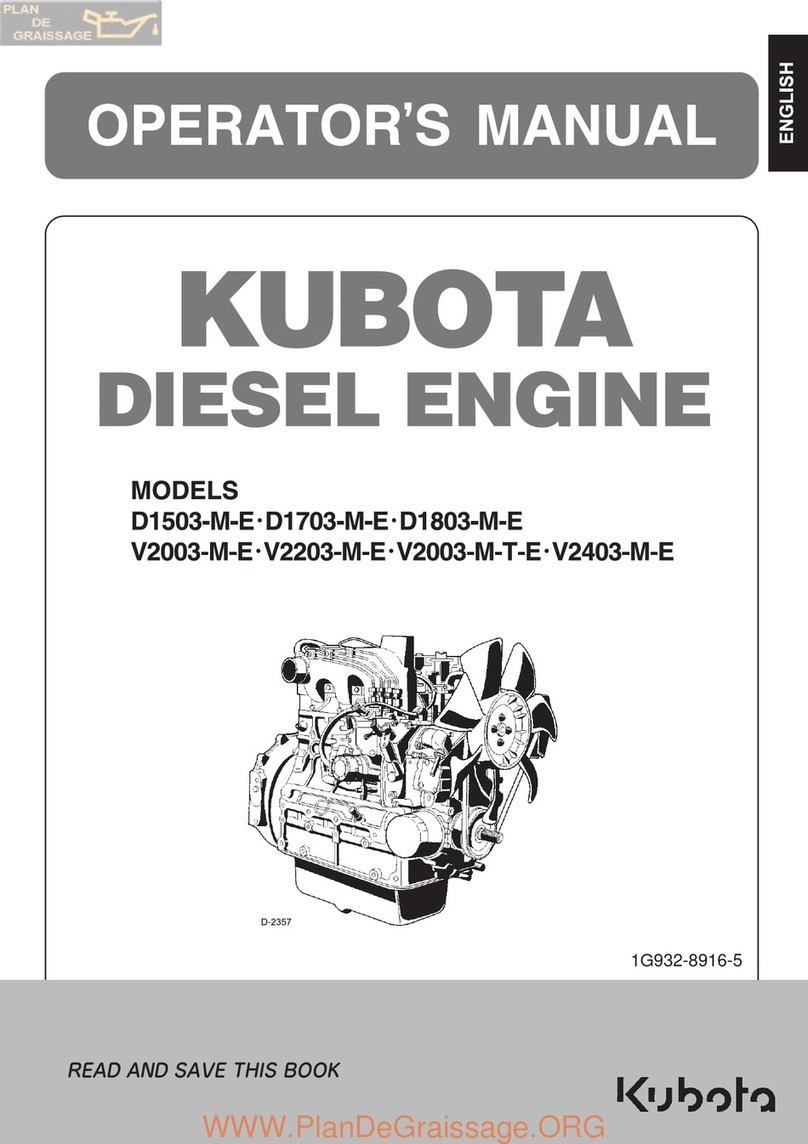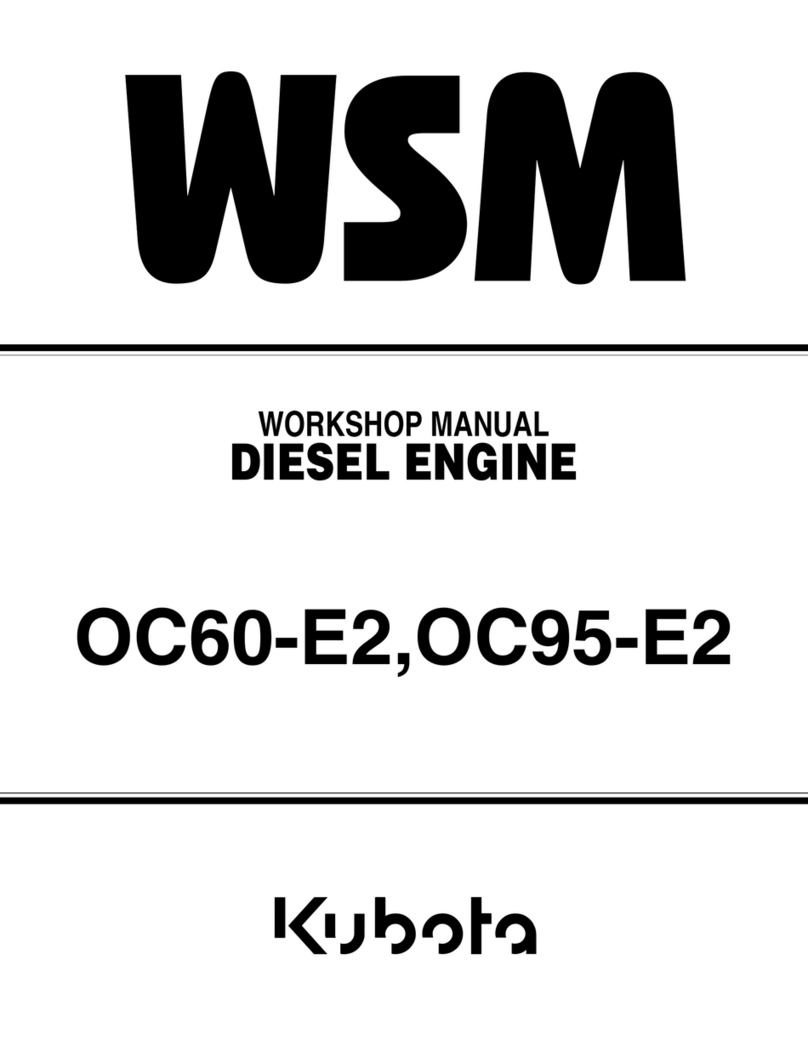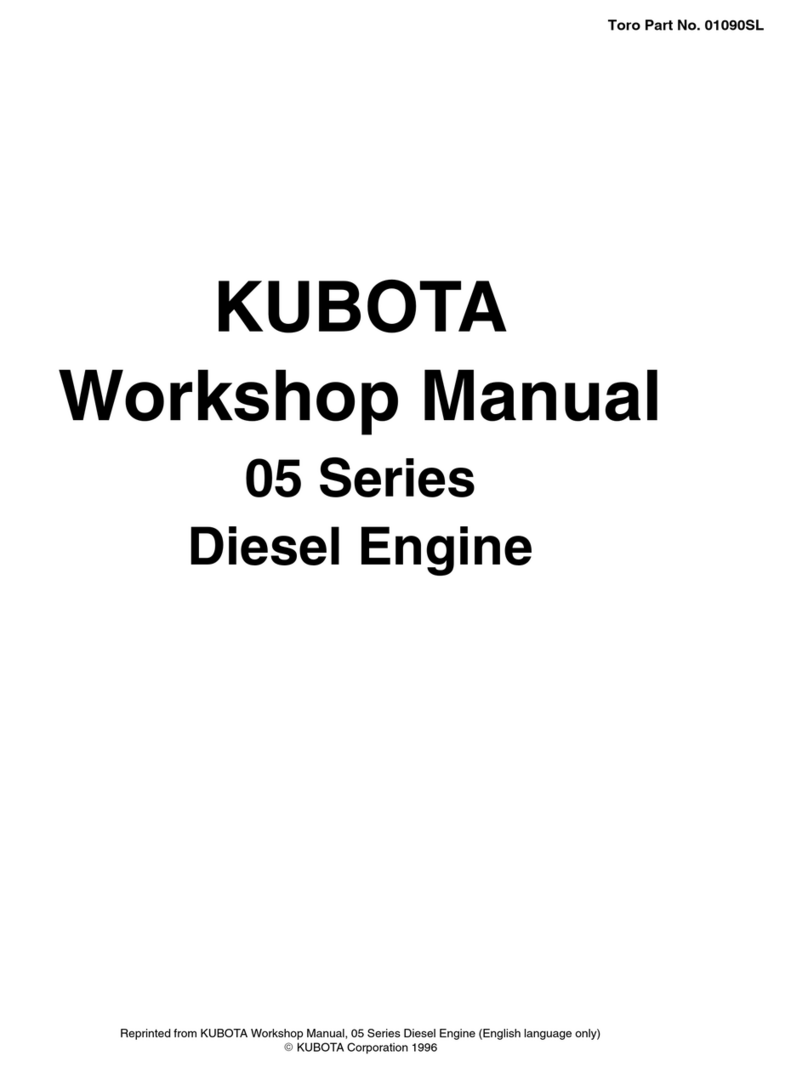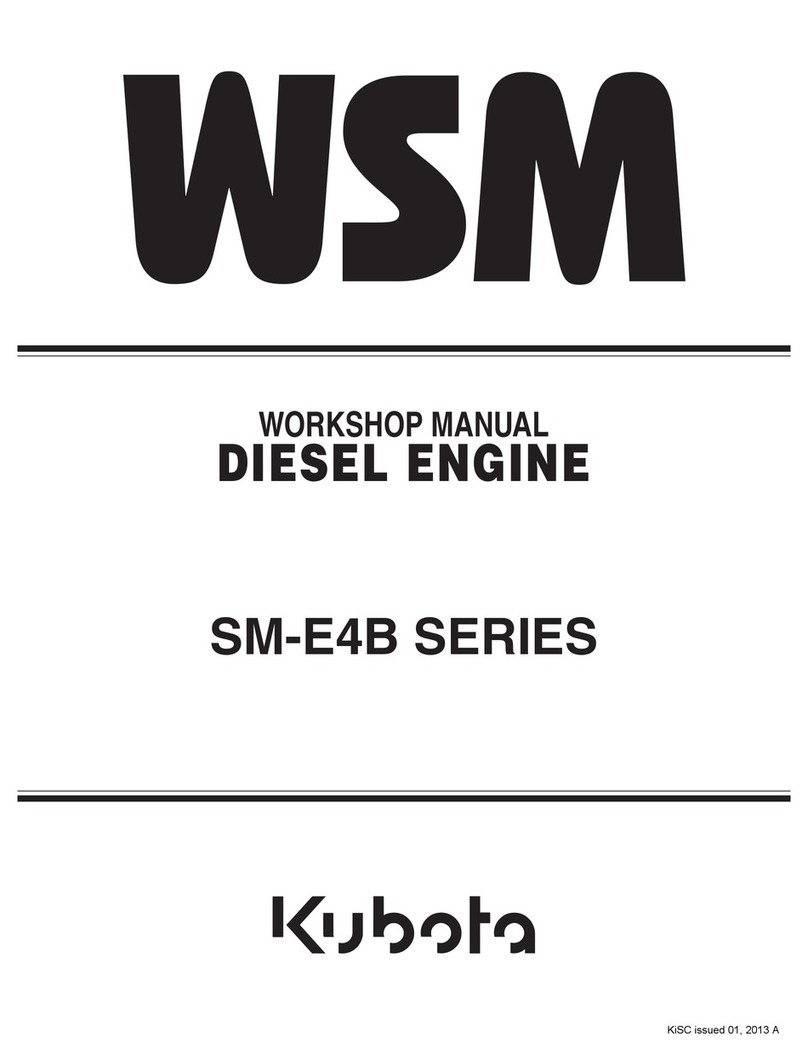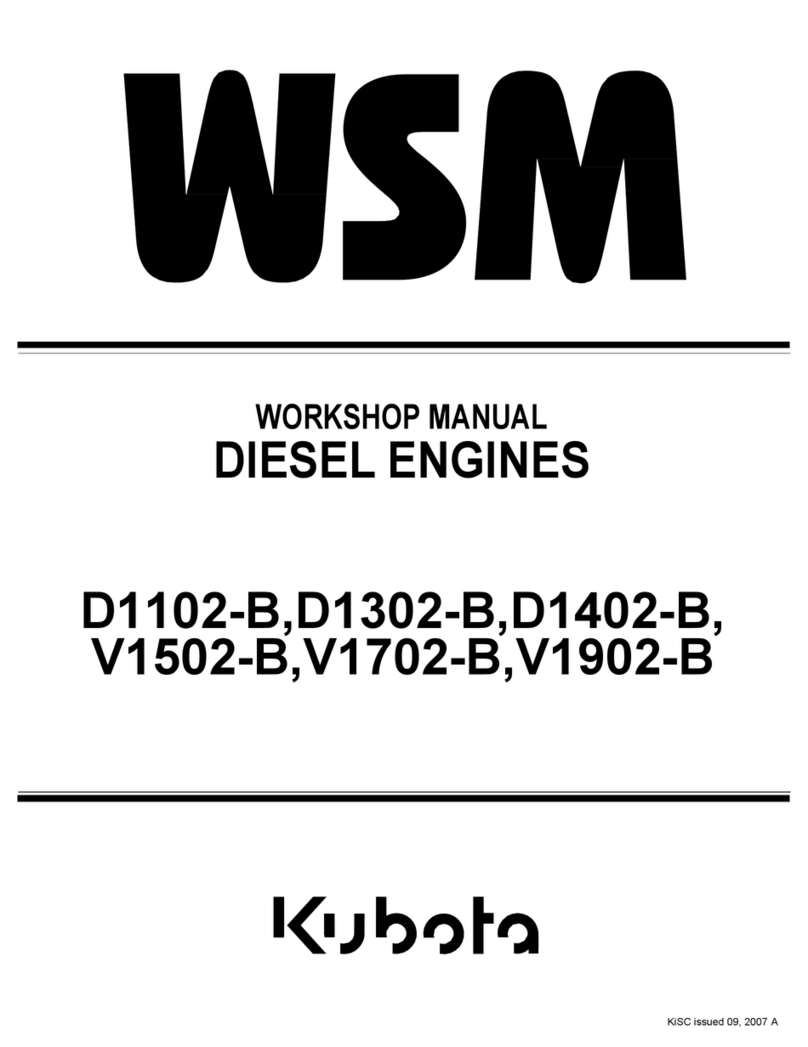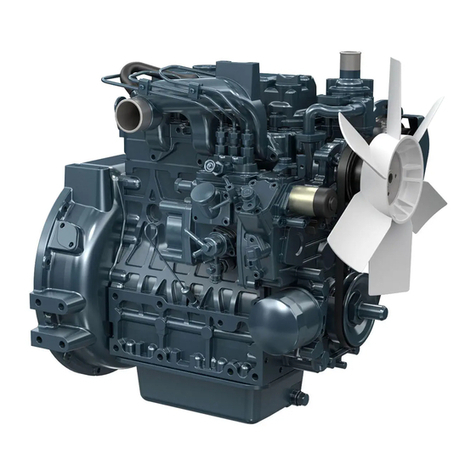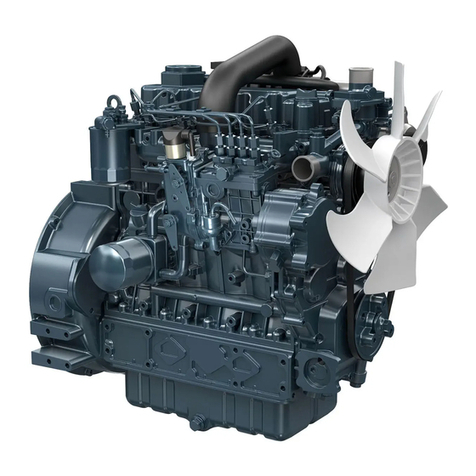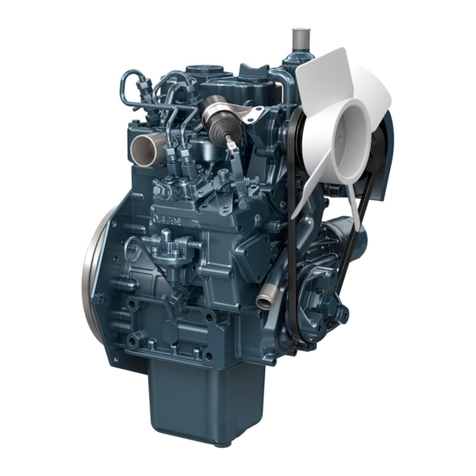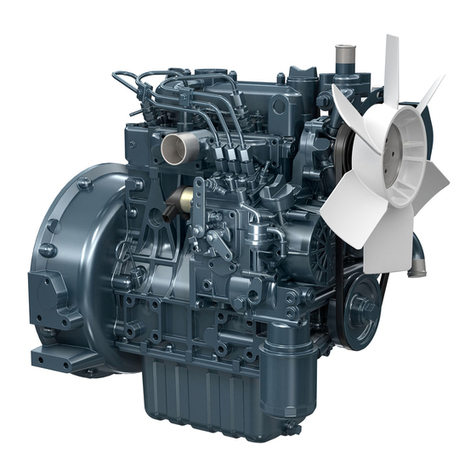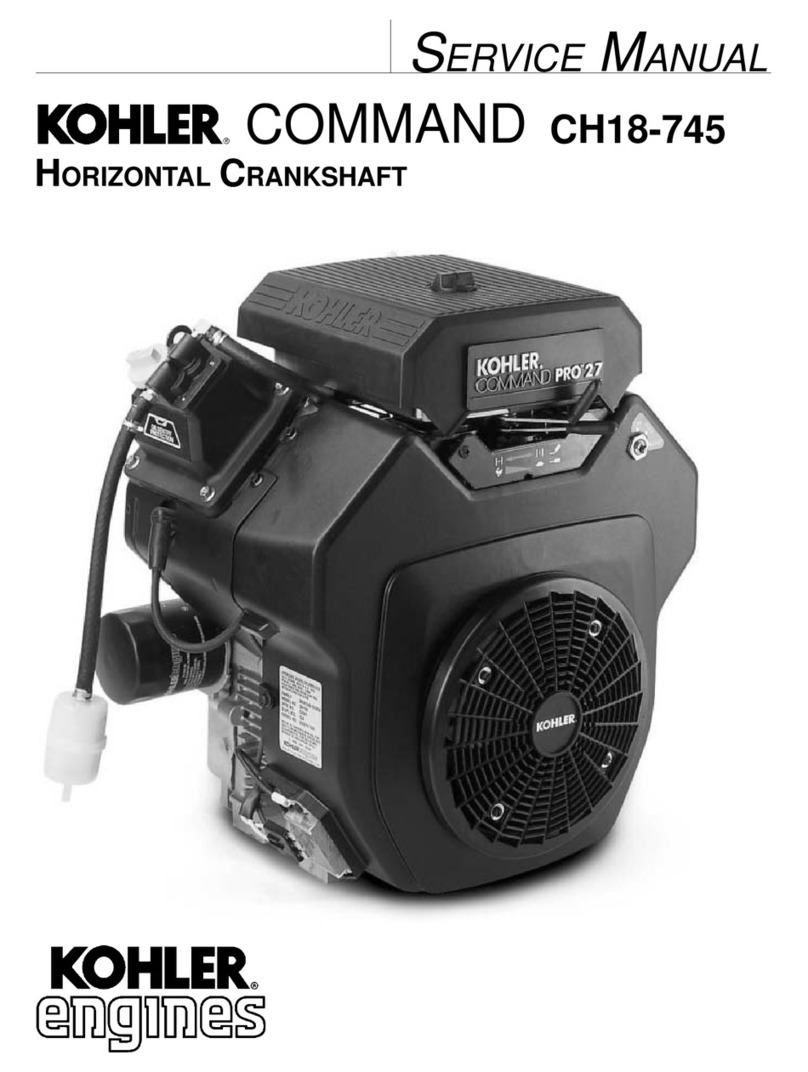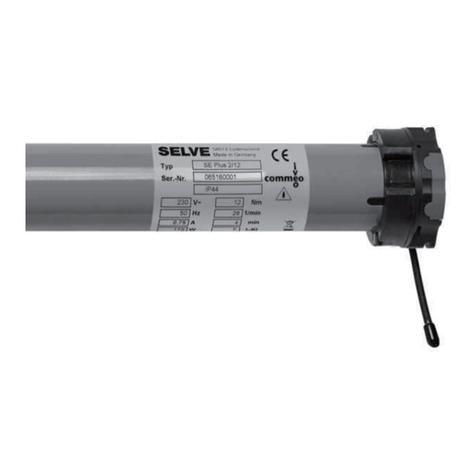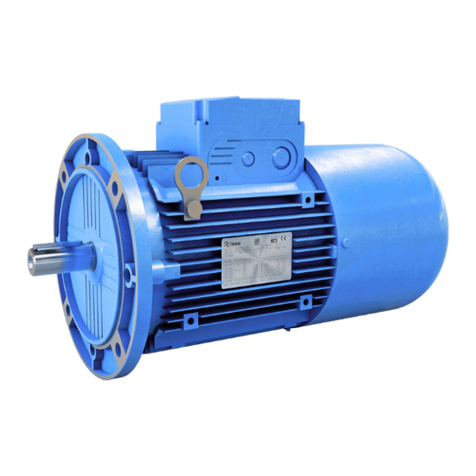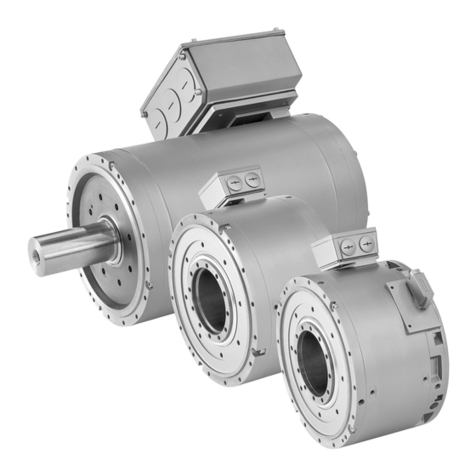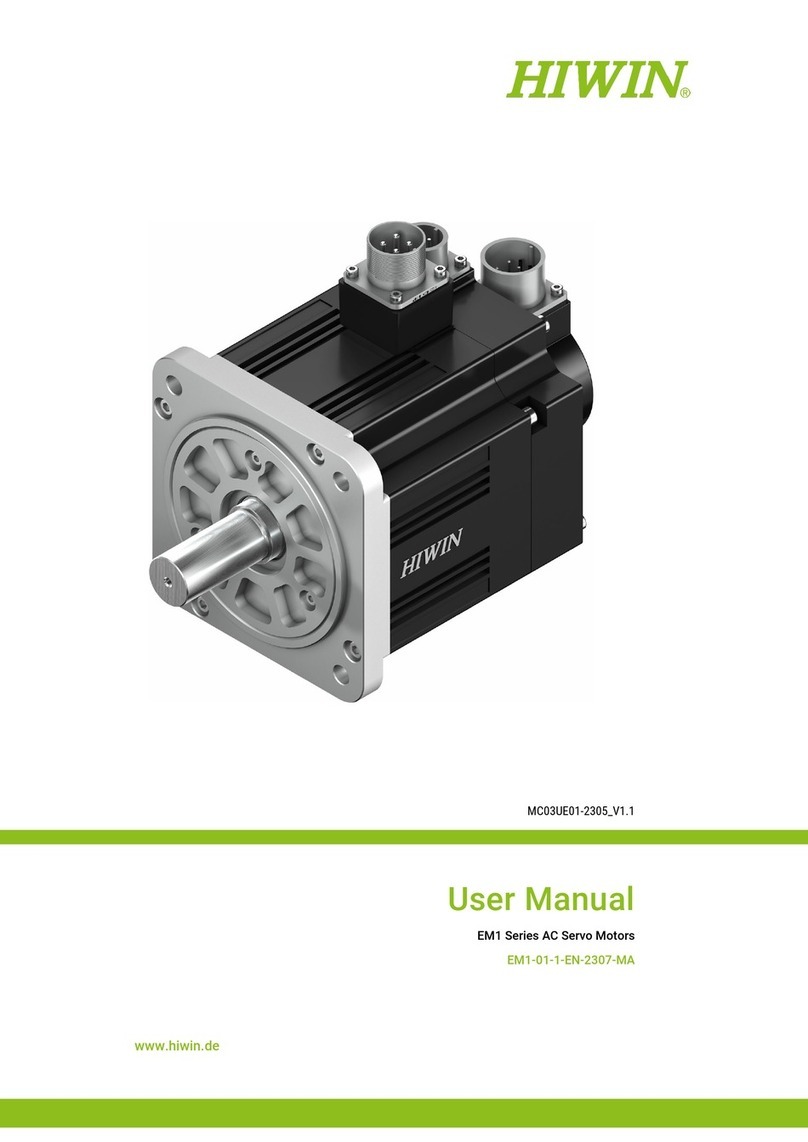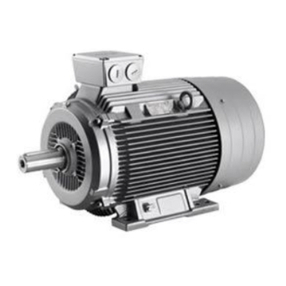
CONTENTS
ENGLISH
EVERY 500 SERVICE HOURS..............................................................................26
Replacing fuel filter cartridge.......................................................................................... 26
Replacing oil filter cartridge ............................................................................................ 26
Cleaning water separator (Type 1)................................................................................. 26
Removing sediment in fuel tank ..................................................................................... 26
Cleaning fuel tank interior............................................................................................... 26
Cleaning water jacket (radiator interior) ......................................................................... 26
Replacing fan belt........................................................................................................... 26
EVERY 500 SERVICE HOURS OR 1 YEAR .........................................................27
Changing engine oil........................................................................................................ 27
Replacing water separator filter (Type 2) ....................................................................... 27
EVERY 500 SERVICE HOURS OR 2 YEARS .......................................................27
Replacing fan belt........................................................................................................... 27
EVERY 1000 SERVICE HOURS............................................................................27
Checking valve clearance .............................................................................................. 27
EVERY 1500 SERVICE HOURS............................................................................28
Checking injector tip ....................................................................................................... 28
Checking EGR cooler..................................................................................................... 28
Changing oil separator element ..................................................................................... 28
Checking PCV valve (Positive Crankcase Ventilation valve) ......................................... 28
EVERY 3000 SERVICE HOURS............................................................................28
Checking turbo charger .................................................................................................. 28
Checking EGR System................................................................................................... 28
ANNUAL SERVICING ............................................................................................29
Replacing air cleaner element........................................................................................ 29
Checking EGR piping ..................................................................................................... 29
Checking intake air line .................................................................................................. 29
Checking exhaust manifold for cracks or gas leak and for looseness or damage ........ 29
BIENNIAL SERVICING ..........................................................................................29
Replacing rubber piping related oil separator................................................................. 29
Replacing intake air line and suction air pressure takeout rubber piping ....................... 29
Replacing boost sensor pressure rubber piping ............................................................. 29
Replacing EGR cooler rubber piping.............................................................................. 29
Replacing EGR differential pressure sensor rubber piping ............................................ 29
Replacing water rubber piping........................................................................................ 29
Replacing lubricant rubber piping................................................................................... 29
Changing radiator coolant (L.L.C.) ................................................................................. 29
Remedies for quick decrease of coolant ........................................................................ 29
Replacing radiator hoses and clamp bands ................................................................... 30
Replacing fuel pipes and clamp bands........................................................................... 30
Replacing intake air line ................................................................................................. 30
SERVICE AS REQUIRED ......................................................................................30
Draining water separator (Type 2).................................................................................. 30
CARRIAGE AND STORAGE .....................................................................................31
CARRIAGE .............................................................................................................31
STORAGE ..............................................................................................................31
TROUBLESHOOTING ...............................................................................................32
SPECIFICATIONS .....................................................................................................34
